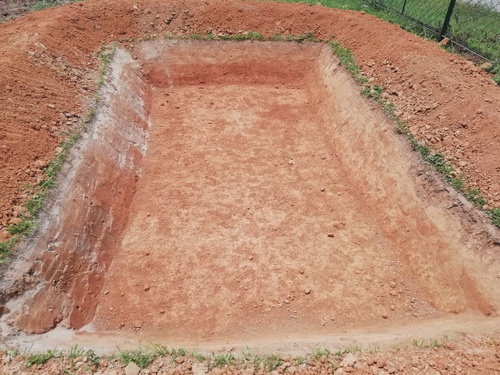Two types of ration need to be formulated
Concentrates:
| Ingredients: | Amount (kg) |
|---|---|
| Wheat bran | 38 |
| Maize/ Wheat powder | 22 |
| Khesari | 22 |
| Soyabean meal | 08 |
| Til oil cake | 07 |
| DCP | 1 |
| Salt | 1 |
| Vitamin-mineral premix | 1 |
| Total | 100 |
| Or use the calculator | |
Roughage: (Green grass/Straw/Silage/ UMS)
Silage preparation Process:

Urea Molasses Straw (UMS) Preparation Process:
UMS is straw mixed with urea and molasses. The ratio of this mixture is Straw:Molasses: Urea= 82:15:3.
Simple preparation method:
How to prepare:
Determining the weight of water
Diagnosis of Chitagur Weight
Diagnosis of urea weight
Weighed water, chitagur and urea and straw
A mixture of chitagur with water
A mixture of urea with water
Spread polythene and spread small cut straw on it
Spread the chopped straw evenly over the polythene
The mixture soaked all the straw with a shower
Sprinkle the mixture by hand and soak all the straw
Now UMS is ready. It can be fed upto three days or immediate after preparation.
Cautions:
Once made UMS can not be fed after three days of preparation
The amount of urea can never be increased more than 3%.
Income and Expenditure:/ Cost and Profit:
| Expense: | Taka (/=) |
|---|---|
| Fodder cultivation and silage preparation (1 acre) | |
| Ploughing | 5000 |
| Fertilizer cost (1st time) | 4000 |
| Fertilizer cost (2nd time) | 800 |
| Fertilizer cost (3rd time) | 800 |
| Seed cost | 2400 |
| Irrigation | 1500 |
| Grass chopping and silage pit filling | 15000 |
| Polythene | 1000 |
| Total | 30500 |
| Approximately 20 ton fodder can be harvested from 1 acre of land | |
| Silage production cost (BDT/kg) | 1.5 |
| Concentrate cost (BDT/kg) | 27 (24-28) |
| Daily silage cost per cow (BDT) | 36 |
| Daily concentrate cost per cow (BDT) | 70 |
| Total cost of 1 animal in 120 days of fattening: | |
| Animal purchase | 40000 |
| Silage cost | 4320 |
| Concentrate cost | 8400 |
| Labour cost | 3600 |
| Depriciation cost | 150 |
| Others | 350 |
| Total cost | 56820 |
| Income: | Taka(BDT) |
| Body weight of an animal bought at 40,000 taka will be minimum 160 kg and at least 80 kg meat will be available from this animal which has a market value | 80*500= 40,000 |
| Other cost | 16820 |
| Total cost | 56820 |
| After fattening the body weight of the animal will be minimum 262 kg and at least 144 kg meat will be available from it which has a market value | 144*500=72000 |
| Fattening of one cow will yield minimum profit | 15180 |